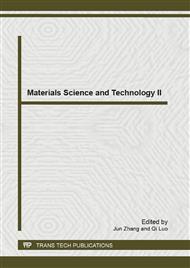p.40
p.44
p.50
p.54
p.58
p.62
p.66
p.70
p.74
A Simple and Sensitive Fluorescence Quenching Method for the Determination of Trace IO3- Using Acridine Red
Abstract:
In the medium of HCl containing KI, acridine red (AR) exhibited a fluorescence peak at 550 nm, and acridine ornage (AO) has a fluorescence peak at 520 nm. Upon addition of IO3-, it reacts with excessive I- to form I3-. The AR and I3- combine to form an association particle that caused fluorescence quenching at 550 nm. IO3- concentration in the range of 5.0-120×10-7 mol/L can be determined by AR fluorescence quenching method.
Info:
Periodical:
Pages:
58-61
Citation:
Online since:
July 2013
Authors:
Keywords:
Price:
Сopyright:
© 2013 Trans Tech Publications Ltd. All Rights Reserved
Share:
Citation:


